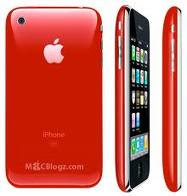 "Do we really need one? "
"Do we really need one? "I'm guessing those were the first words that sprang to mind when you saw that headline and if so, we were thinking along the same lines. However, this actually looks more promising than we could ever have imagined.
Access, the company that bought the rights to the remnants of PalmOS, has taken its Linux-based Access mobile platform and added some design wizadry from Emblaze Mobile, a technology design house for mobile devices, and ended up with the Else (as in 'something else') Intuition mobile platform. While this could easily have been just another also ran of the mobile market, the way this platform has been designed and some of the features it has do look quite exciting.
First and foremost, is the emphasis on one-handed operation - something that the designers of the iPhone and its various pretenders seem to have forgotten is how you often use your phone. While the main menu takes on a fairly familiar diamond shaped grid pattern of links to the phones various features, an alternative fan-style menu gives you access to the vast majority of the phones features within a very small space. It works on two levels with the first level offering a choice of the phones different programs and the second level (i.e. moving your finger further out from the centre of the fan) showing the latest documents/events associated with that proggram. The homescreen also supports gestures so you can get to your chosen apps even easier.
Emphasis has also been placed on genuine easy muitl-tasking. In particular, core apps like the music player or call notification are displayed discretely and don't completely disrupt what you're currently doing. So, for instance, if you're in the camera app and you receive a call, a notification will appear in the corner, letting you choose whether to finish what you were doing or take the call - rather than have the call answer dialogue fill the screen completely and ruin your photo. Further to this, it let's a caller give you silent feedback on whether the call is urgent or not: If you're in a meeting, say, it presents the caller with a busy message then offers a choice of whether to persist with the call because it's urgent or whether to call back at some specified time. Once the caller has decided, the recipient is notified.
Emphasis has also been placed on genuine easy muitl-tasking. In particular, core apps like the music player or call notification are displayed discretely and don't completely disrupt what you're currently doing. So, for instance, if you're in the camera app and you receive a call, a notification will appear in the corner, letting you choose whether to finish what you were doing or take the call - rather than have the call answer dialogue fill the screen completely and ruin your photo. Further to this, it let's a caller give you silent feedback on whether the call is urgent or not: If you're in a meeting, say, it presents the caller with a busy message then offers a choice of whether to persist with the call because it's urgent or whether to call back at some specified time. Once the caller has decided, the recipient is notified.
The ever more common contact and message integration that let's you refer to a single contact for emails, SMS, and any other messaging services is also present. Possibly creeping some people out, all calls can also be recorded and stored on the phone for later referal.
There's plenty more to this platform including its 'fisheye' control mechanism, which magnifies and brings to the middle of the screen whatever it is you've just selected, the impressive looking keyboard, and the unique design of the overall interface that is just Star Trek through and through. However, we didn't actually manage to get hands on with it so we'll leave the details to when we actually get some hardware in for review.
There's plenty more to this platform including its 'fisheye' control mechanism, which magnifies and brings to the middle of the screen whatever it is you've just selected, the impressive looking keyboard, and the unique design of the overall interface that is just Star Trek through and through. However, we didn't actually manage to get hands on with it so we'll leave the details to when we actually get some hardware in for review.
The first phone to use this new platform is, funnily enough, going to be called the Else. It packs in a 5 megapixel camera, up to 32GB flash memory, a 3.5inch capacitive touchscreen with a resolution of 854 x 480, GPS, and all the latest phone must haves. If won't, though, be available until Q2 2010, so we've got a bit of a wait.
Links: *Annoying Flash based sillyness warning.* Read More......
Links: *Annoying Flash based sillyness warning.* Read More......

0 comments:
Post a Comment